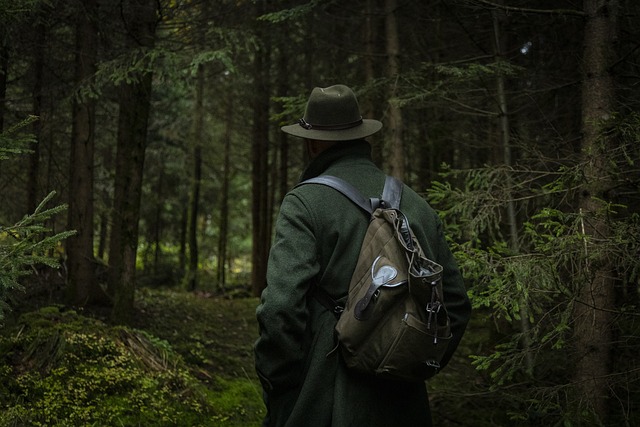When venturing into the great outdoors, it’s essential to adopt Leave No Trace principles to safeguard the natural beauty we cherish. One crucial yet often overlooked aspect of these principles is properly managing human waste while hiking. With years of experience in the backcountry, I’m here to share practical tips that will help you minimize your impact, preserve the environment, and maintain respect for other hikers.
Why Human Waste Disposal Matters
Managing human waste responsibly isn’t just about aesthetics; it’s about protecting the environment and public health.
Environmental Impact
- Water Source Contamination: Human waste carries harmful bacteria and pathogens. When left near water sources such as streams, lakes, or rivers, it can pollute the water, making it unsafe for humans and wildlife.
- Disease Transmission: Improper waste disposal increases the risk of diseases like Giardia and E. coli, which can cause severe gastrointestinal problems when hikers unknowingly drink or interact with contaminated water or soil.
- Wildlife Disruption: When human waste is left exposed, it can attract wildlife, altering their natural behavior. Animals may become more dependent on human food or exhibit aggressive tendencies, which disrupt ecosystems and put them in harm’s way.
Social Impact
- Preserving the Trail Experience: Discovering waste left by others can ruin the experience of being in nature. Proper waste disposal helps keep trails clean and enjoyable for all.
- Respect for Fellow Hikers: When we manage our waste appropriately, we show consideration for those sharing the same outdoor spaces. It fosters a sense of community and respect among hikers.
Preparing for Your Hike
Responsible waste management begins before you even step foot on the trail. Here’s how to prepare:
Know the Regulations
Different hiking areas have unique rules about waste disposal, particularly in delicate environments. Research local guidelines beforehand to ensure compliance. Some areas may require hikers to pack out all waste, while others allow cathole digging.
Pack the Right Gear
- Toilet Paper or Biodegradable Wipes: Bring enough toilet paper or biodegradable wipes and pack them in a sealable bag to keep them dry.
- Trowel or Shovel: A lightweight trowel is essential for digging catholes. Look for compact or collapsible designs to save space in your backpack.
- Hand Sanitizer or Biodegradable Soap: Keep hand sanitizer or soap handy to maintain hygiene after using the bathroom. This helps prevent the spread of germs on the trail.
- Sealable Plastic Bags: If regulations require packing out used toilet paper, bring enough sealable bags. Using two bags can help prevent odor leakage and keep your gear clean.
Choosing the Right Location
Selecting the right place to relieve yourself is crucial for both environmental protection and courtesy toward other hikers.
- Stay Away from Water Sources: Always position yourself at least 200 feet (approximately 70 adult paces) from any water sources. This distance helps prevent contamination and ensures water remains safe for drinking.
- Distance from Trails and Campsites: Similarly, maintain a distance of 200 feet from trails, campsites, and high-use areas. This helps preserve the environment’s natural beauty and offers privacy to other hikers.
- Consider the Soil Type: Aim to dig your cathole in rich, organic soil that promotes rapid decomposition. Avoid rocky or compacted areas where waste may not break down efficiently.
Digging a Cathole
A cathole is the most widely accepted method for waste disposal while hiking.
- Size and Depth: The cathole should be 6-8 inches deep and about 4-6 inches wide. This ensures waste is buried deep enough to decompose correctly and not be disturbed by wildlife.
- Digging Technique: Dig the hole to the correct depth using a trowel. After use, cover the waste with loose soil and camouflage the area with natural materials like leaves or rocks. This helps prevent animals from digging it up.
Here’s Why Do You Bury Poop When Camping?
Disposing of Toilet Paper and Wipes
To minimize environmental impact, you must handle toilet paper and wipes properly.
- Pack It Out: In areas where catholes aren’t permitted or suitable, pack used toilet paper or wipes in a sealable plastic bag and carry them out. Double-bagging helps contain any potential odor.
- Bury It: If you’re using a cathole, small amounts of biodegradable toilet paper can be buried. Just make sure it’s fully covered to avoid it being exposed.
Maintaining Cleanliness and Hygiene
Staying clean is essential for both personal health and reducing the spread of disease on the trail.
- Proper Handwashing: After relieving yourself, wash your hands thoroughly with soap and water or use hand sanitizer. Scrub for at least 20 seconds to ensure adequate cleaning.
- Packing Out Sanitary Products: Tampons, pads, and other sanitary products should never be buried or burned. Instead, pack them out in sealable plastic bags, as they take a long time to decompose.
Alternative Methods of Waste Disposal
Sometimes, digging a cathole isn’t possible, such as in high-altitude areas or on rocky terrain. In these cases, alternative solutions are necessary.
- Portable Toilet Systems: Consider using portable toilet systems like wag bags in fragile ecosystems. These are odor-proof, easy to use, and can be packed out to ensure no waste is left behind.
- Wag Bags: These specially designed bags allow hikers to safely pack out waste when digging is not permitted. They’re durable and minimize the environmental impact.
Educating Others and Setting an Example
All outdoor enthusiasts need to educate themselves and others on responsible waste disposal practices.
- Lead by Example: By practicing responsible behavior yourself, you can influence others to follow suit. Show your hiking companions how to properly dispose of waste and explain why it’s necessary.
- Spread the Word: Encourage responsible practices by sharing tips and resources with fellow hikers. Whether online or in-person, spreading awareness can have a big impact.
Conclusion
Proper human waste disposal is critical to the Leave No Trace philosophy. By following these guidelines—being prepared, choosing the right location, digging a cathole, and educating others—we can ensure that the trails we love remain clean and beautiful for future generations. Let’s do our part to protect these natural spaces while enjoying all they offer.
Nature’s Restroom: How to Poop in The Woods Without Toilet Paper




